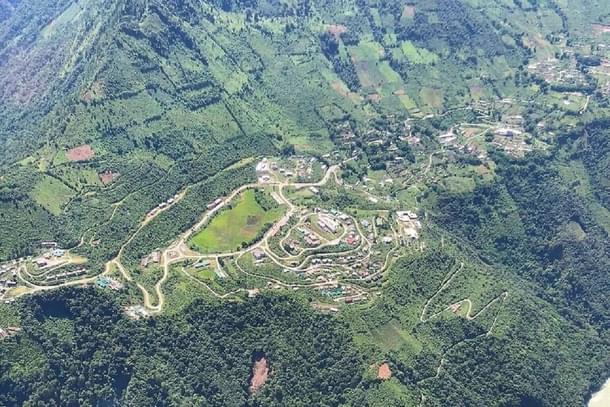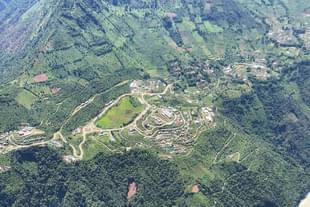News Brief
Arunachal: Indian Army Helping Identify Location For Border Villages Close To LAC Amid Concerns Over Chinese Settlements
Swarajya Staff
Sep 12, 2022, 12:49 PM | Updated 12:54 PM IST
Save & read from anywhere!
Bookmark stories for easy access on any device or the Swarajya app.


The Indian Army is helping the civilian administration in Arunachal Pradesh in identifying the location of the model villages to be built along the Line of Actual Control (LAC).
“We help the civil administration in identifying the location for building the planned model villages close to the LAC,” an army officer has been quoted in a News18 report as saying.
The development comes amid concerns over China's construction of hundreds of border settlements along Tibet's frontier with India.
China's border consolidation project is aimed at asserting its expansive territorial claims against India and Bhutan.
China's Border Consolidation Project
Under its “well-off border villages” programme, China has developed at least 628 settlements along the frontier with India and Bhutan since 2017.
For instance, China has built a new settlement in Indian territory under its occupation in the Shi-Yomi district of Arunachal Pradesh. Earlier, it had built a village in the Upper Subansiri district of the state in an area under its control since the late 1950s.
To convince Tibetans to move to these villages, the Chinese Communist Party (CCP) has invested in infrastructure such as roads, railways and power grid. Around 30.1 billion yuan or nearly $4.6 billion was earmarked in 2017 for the construction of new homes and infrastructure.
Apart from spending billions on infrastructure development, China has used economic incentives, including annual subsidies, to get reluctant Tibetans to move to border villages.
China has employed nomadic communities living along the Himalayan frontier in Tibet, like herders, through persuasion and coercion, to strengthen its territorial claims in eastern Ladakh and northern Bhutan.
Nomads are dispatched with their herds of goats, sheep and yak to settle in these territories — pasturelands across the border which their ancestors may have had access to — by establishing a permanent presence there and forcing Indian and Bhutanese herders to abandon these areas through the tactics prescribed by the CCP.
The CCP is also aggressively pushing tourism to the frontier areas of Tibet, a project made possible by the rapid development of dual-use infrastructure along the border over the last two decades.
By the time China completes the current phase of the border villages programme, it would have moved over 240,000 people to the frontier.
The population of Tibet's border areas has grown by 10.5 per cent, Wu Yingjie, the Chinese Communist Party secretary for Tibet, revealed in August 2021 at an event marking the 70th anniversary of the "peaceful liberation of Tibet".
As Swarajya reported earlier, China's border consolidation project will not conclude with the completion of this programme.
China's 14th Five Year Plan promises to "speed up the construction of border villages" and build "about 200 new villages" along the frontiers.
Large infrastructure projects for Tibet, such as "hydropower development on the lower reaches of the Yarlung Zangbo river" (the Brahmaputra in India) and highway from "Medog to the Yunnan-Tibet boundary" (just north of Arunachal) underline continued focus on border areas.
How India's Response Is Taking Shape
To counter this, the government of Arunachal Pradesh, in its annual budget for 2021, announced that it will develop model villages along the border with Tibet as a pilot project, with plans to expand the programme to more border villages in the future.
An allocation of Rs 30 crore was also made for this purpose by the state government in its budget.
The Eastern Command of the Indian Army has been working with the state government for the development of these model villages.
"We have come up with a border village initiative, in which we have identified three to four villages, which we have plans to develop as model villages," Army Chief General Manoj Pande, then the General Officer Commanding-in-Chief Eastern Command, said in late 2021.
Since then, India has also launched the Vibrant Villages Programme for the northern border. Announced in this year's Union budget, the programme is aimed at improving infrastructure in villages along India's border with China, in Ladakh, Himachal Pradesh, Uttarakhand, Sikkim and Arunachal.
The Centre has also allocated six times more funds for the development of border infrastructure in Arunachal Pradesh.
The government has revealed that the allocation for the Border Infrastructure and Management Scheme in Arunachal has been increased from Rs 42.87 crore in 2020-21 to Rs 249.12 in 2021-22.
These developments have been accompanied by a sharp increase in the budget for the Border Roads Organisation (BRO), responsible for the construction and maintenance of roads along India's frontiers.
In the 2021-22 budget, the government has increased the capital outlay for the BRO by 40 per cent to Rs 3,500 crore.
India has built 2,088 km of roads in areas bordering China in the last five years with an expenditure of Rs 15,477 crore.
More recently, the Centre has notified amendments to environmental impact assessment rules, exempting highway projects related to defence and strategic importance within 100 km of the LAC or the border from the requirement of environmental clearance.
Reports say the government could soon set up a dedicated agency for the management of infrastructure along India's borders. Border Infrastructure Management Authority will be responsible for the development of road, rail, water, power and communications infrastructure along the borders, including the frontier with Tibet.





